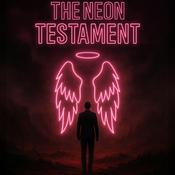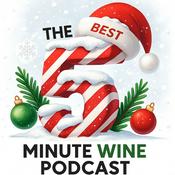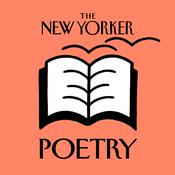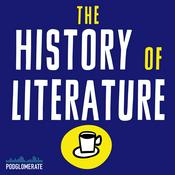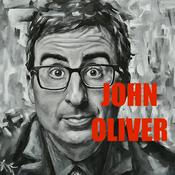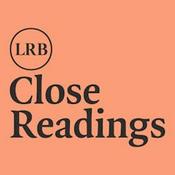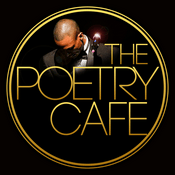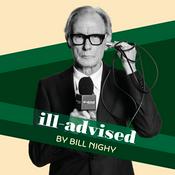44 episodes
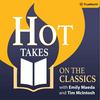
Episode 20: The Temple: The Architecture of the Soul — George Herbert
12/16/2025 | 1h 3 mins.
DescriptionIn this episode of Hot Takes on the Classics, Tim McIntosh and Emily Maeda explore The Temple by George Herbert, one of the most profound devotional poetry collections in the English language. Through close readings of Herbert’s poems and reflections on his life, suffering, and vocation, the hosts examine how Herbert uses poetic form, architectural structure, and startling imagery to express the depths of divine love. Along the way, they reflect on the experience of reading poetry slowly and attentively, the relationship between affliction and grace, and why Herbert continues to shape poets, theologians, and readers centuries later.Episode OutlineOpening reading of George Herbert’s poem “Bitter-sweet”Emily’s personal encounter with Herbert through Christine Perrin’s lecture at The CiRCE National ConferencePoetry as an experiential art: reading collections versus isolated poemsComparing poetry collections to listening to a full albumDiscussion of poetry collections by Rainer Maria Rilke, T.S. Eliot, and R.S. ThomasGeorge Herbert’s life: education, illness, vocation, and pastoral ministryHerbert’s relationship to John Donne and the metaphysical poetsThe Country Parson as Herbert’s only work published during his lifetimeThe posthumous publication and reception of The TempleStructural “architecture” of The Temple: Church Porch, The Church, The Church MilitantClose readings and discussion of poems from The Temple, including “The Glance,” “The Agony,” “Virtue,” “The Wreath,” and “Love (III)”.Herbert’s use of poetic form (visual poems, repetition, symmetry)Reflections from T.S. Eliot, W.H. Auden, Elizabeth Bishop, and Simone WeilPoetry as the proper language for suffering and divine loveClosing reflections on poetry, attention, and formationKey Topics & TakeawaysPoetry as Formation: Herbert’s poetry resists abstraction and demands patient attention, shaping the reader through image, rhythm, and form rather than argument.Affliction and Divine Love: Herbert presents suffering not as a contradiction of God’s love but as one of its deepest avenues, especially in poems like “The Agony” and “Love (III).”Architectural Meaning: The Temple is structured like a sacred space—moving inward, upward, and through the stages of the Christian life.Form Serves Meaning: Herbert’s experimental poetic forms (wreaths, wings, typographic play) embody theological truth rather than merely decorate it.Enduring Influence: Herbert’s work continues to shape modern poets, theologians, and seekers across belief traditions.Questions & DiscussionWhy does reading poetry slowly matter?Consider how reading an entire poetry collection—rather than isolated poems—changes interpretation and emotional impact.How does Herbert connect suffering and love?Reflect on how poems like “The Agony” and “Love (III)” portray pain as a vehicle for grace rather than its opposite.What does Herbert gain by using poetic form visually?Discuss how poems like “The Wreath” or “Easter Wings” communicate meaning through structure, not just words.Can poetry communicate theological truth better than prose?Think about why figures like Erik Varden argue that poetry is uniquely suited to expressing spiritual realities.Why does “Love (III)” remain so powerful for readers today?Reflect on its depiction of divine hospitality, shame, and acceptance, and why it continues to resonate across centuries.Suggested ReadingThe Temple by George HerbertThe Poems of George Hebert by George HerbertThe Country Parson by George HerbertConfessions by St. Augustine translated by Sarah RudenHoly Sonnets by John DonneDuino Elegies by Rainer Maria RilkeFour Quartets by T.S. EliotR.S. Thomas: Everyman Poetry by R.S. ThomasWaiting for God by Simone WeilHealing Wounds by Bishop Erik VardenChastity: The Reconciliation of Senses by Bishop Erik Varden

Episode 19: The Art and Music of Love: Theresa, Dido, and Shepherds
12/09/2025 | 53 mins.
DescriptionIn this episode of Hot Takes on the Classics, Emily Maeda and Tim McIntosh explore how Western art and music have depicted the many faces of love—from divine ecstasy to tragic longing to the gentle affections of pastoral life. They move through Beethoven’s Pastoral Symphony, Purcell’s Dido and Aeneas, Bernini’s Ecstasy of St. Teresa, and Bruegel’s The Wedding Dance, examining how artists across eras have tried to portray the beauty, complexity, and vulnerability of human and divine love. Through music, sculpture, and painting, Emily and Tim reflect on what these works reveal about desire, the human soul, and our longing for harmony.Episode OutlineOpening reflections on how music and visual art express forms of love beyond wordsBeethoven’s Pastoral Symphony and the emotional world of shepherdsThe pastoral tradition and the association of shepherds with simplicity, joy, and musical beautyPieter Bruegel’s The Wedding Dance and the communal joys of embodied loveBernini’s The Ecstasy of St. Teresa as a depiction of divine, overwhelming unionThe ambiguity of mystical imagery—sensual, spiritual, or both?Shift to tragic eros in Purcell’s Dido and AeneasDido’s lament as one of the most powerful expressions of forsaken loveClassical echoes: Virgil’s Aeneid and Dido’s place in the InfernoClosing reflections on what art and music teach us about the varieties of loveKey Topics & TakeawaysMusic as a Language of Affection and Joy: Beethoven’s Pastoral Symphony evokes the emotional clarity, peace, and playfulness associated with shepherds—figures who embody a simpler, more integrated relationship to nature and love.The Pastoral Tradition and Innocent Desire: From classical poetry to Renaissance art, shepherds symbolize a state of harmony where affection and desire are uncorrupted by ambition or social pretense.Embodied Celebration in Bruegel’s The Wedding Dance: Bruegel captures the physicality, joy, and communal warmth of love—reminding us that affection is often expressed through bodies in motion.The Ecstatic Union in Bernini’s St. Teresa: Bernini dramatizes a moment of mystical encounter that blurs the line between spiritual and sensual love, inviting viewers to consider the intensity of divine desire.Dido’s Tragic Eros in Purcell and Virgil: Dido’s grief in Dido and Aeneas echoes the literary Dido of the Aeneid, revealing how erotic love can elevate and devastate. Her lament remains one of the most moving expressions of abandonment in Western music.Questions & DiscussionHow does pastoral imagery shape our understanding of innocent love?Consider how shepherds represent harmony, simplicity, and musical beauty. Does this imagery still resonate with modern listeners? What role do bodies play in the expression of love?Reflect on Bruegel’s Wedding Dance. How does embodied joy communicate forms of affection that words cannot? Is Bernini’s Ecstasy of St. Teresa primarily spiritual or sensual?Discuss whether the sculpture’s intensity reveals something essential about divine love—or whether it intentionally makes us uncomfortable.What makes Dido’s lament so emotionally powerful?Think about how Purcell uses musical repetition, silence, and harmonic descent to portray a soul collapsing under the weight of loss.How do these artworks together expand our understanding of love? Explore how divine love, tragic love, and communal love form a fuller picture than any single work could express.Suggested Reading & Related ResourcesThe Four Loves by C. S. LewisThe Aeneid by Virgil The Holy Bible Symphony No. 6 (“Pastoral”) by Ludwig van BeethovenDido and Aeneas (“Dido’s Lament”) by Henry Purcell The Wedding Dance by Pieter Bruegel the Elder“The Ecstasy of Saint Teresa” by Gian Lorenzo Bernini Various sculptures, fountains, architectural works by Gian Lorenzo BerniniAs You Like It by William ShakespeareThe Winter’s Tale by William ShakespeareAll’s Well That Ends Well by William Shakespeare

Episode 18: A Treatise Concerning Religious Affections - Jonathan Edwards: Testing of Our Loves
12/02/2025 | 41 mins.
DescriptionIn this episode of Hot Takes on the Classics, Emily Maeda and Tim McIntosh take a deep dive into Jonathan Edwards’s A Treatise Concerning Religious Affections, one of the most important theological works ever published in America. They explore Edwards’s historical moment in the midst of the First Great Awakening, the cultural divide between “old lights” and “new lights,” and Edwards’s effort to distinguish genuine spiritual transformation from mere emotional excitement. Along the way, they unpack Edwards’s definition of “affections,” discuss why Edwards remains so influential, and consider how his framework might apply to the renewed spiritual energy emerging in the U.S. today.Episode OutlineOpening quotation from A Treatise Concerning Religious AffectionsWho was Jonathan Edwards? Background, intellect, and role in American ChristianityEdwards’s historical moment: The First Great AwakeningOld Lights vs. New Lights — a cultural and theological divideWhy Edwards’s preaching feels “medieval” to modern earsEdwards on the nature of “religious affections”False signs of spiritual renewal — emotions vs. lasting changeTrue signs of grace — the centrality of long-term obedienceEdwards’s pastoral purpose in writing the TreatiseParallels between the Great Awakening and contemporary spiritual “vibe shifts”Closing reflections on agape and the love of GodKey Topics & TakeawaysEdwards’s World: Revival and Upheaval: Edwards writes in the heart of the First Great Awakening—a period of mass conversions, emotional preaching, and widespread debate about what counts as “true religion.”Affections vs. Emotions: For Edwards, affections are deep movements of the will—love, hatred, desire—not fleeting emotions. Genuine Christianity requires these affections to be transformed.False Signs of Spiritual Renewal: Intense emotions, tears, dramatic experiences, or even hearing Scripture in powerful ways do not necessarily indicate genuine spiritual change.True Signs of Grace: Edwards insists that lasting obedience, humility, love, and good works—not dramatic feelings—are the real evidence of transformed affections.Relevance for Today: Tim and Emily connect Edwards’s concerns to modern American spiritual trends, asking whether our current “renewals” will lead to sustained, virtuous lives.Questions & DiscussionWhat distinction does Edwards make between emotions and true spiritual affections?Consider why Edwards locates religious transformation in the will rather than in fleeting feelings. How might this help us evaluate contemporary spiritual experiences?How does Edwards challenge both the ‘old lights’ and the ‘new lights’?Reflect on Edwards’s attempt to affirm genuine emotion while warning against emotional excess. Where do you tend to locate yourself in this debate? Why does Edwards place so much emphasis on long-term obedience?Discuss whether you agree with Edwards that sustained virtue—not emotional intensity—is the clearest sign of genuine Christian faith.How does understanding the First Great Awakening illuminate Edwards’s Treatise?Think about how cultural, theological, and political pressures influenced Edwards’s writing and why his framework was so needed in a divided moment.What parallels do you see between Edwards’s time and current spiritual movements?Explore how Edwards’s insights might help us discern whether today’s “vibe shift” reflects genuine spiritual change.Suggested ReadingTreatise on Religious Affections by Jonathan Edwards Sinners in the Hands of an Angry God by Jonathan Edwards A Religious History of the American People by Sydney E. AhlstromJonathan Edwards by George M. Marsden Pew Research CenterMcIntosh, Timothy Andrew. My Name Is SØREN KIERKEGAARD. Directed by Frank Mihelich

Episode 17: The Confessions of St. Augustine: The Journey of Transformed Love
11/25/2025 | 49 mins.
DescriptionIn this episode of Hot Takes on the Classics, Emily Maeda and Tim McIntosh explore one of the most influential works in Western thought—St. Augustine’s Confessions. Through Augustine’s prayerful reflections, they trace the restless search of a soul divided between desire and grace, and how divine love—caritas—gathers a disintegrated self into unity. Emily and Tim discuss Augustine’s literary innovation, his relationship with his mother Monica, his encounter with Ambrose, and the pivotal conversion in the garden that forever shaped the Christian imagination. Along the way, they uncover why Confessions remains possibly not only the first memoir but also the greatest story of a heart transformed by love.Episode OutlineOpening reading from Confessions, Book X: “Late have I loved you, beauty ever ancient, ever new…”Defining memoir vs. autobiography—why Confessions resists both labelsThe revolutionary nature of self-reflection in Augustine’s writingThe influence of Confessions on Western thinkers and writers: Dante, Kierkegaard, and WittgensteinAugustine’s relationship with his mother Monica as an image of caritasMonica’s perseverance and the bishop’s prophecy: “The son of so many tears will not perish.”Augustine’s flirtation with Manichaeism and the intellectual restlessness it revealedEncounter with Ambrose in Milan and the power of typological readingThe conversion in the garden: “Tolle lege, tolle lege”—“Take and read”Reading Romans 13 and the surrender of the divided willAugustine’s vision of divine love gathering a fragmented soul into unityThe final scene with Monica: shared contemplation of eternal wisdomAugustine’s later reflections on memory, time, and creation—feeling ideas rather than merely thinking themThe enduring image of Confessions as a prayer, not merely a storyKey Topics & TakeawaysThe Birth of the Modern Self: Augustine’s Confessions created a new literary form—introspective, honest, and spiritually reflective—laying the groundwork for later memoirs and psychological writing.Love as Caritas: For Augustine, divine love (caritas) is self-giving, faithful, and redemptive. It unites a fragmented soul and orders all human loves under the love of God.The Role of Monica: Augustine’s mother models steadfast, intercessory love—a living embodiment of patient, redemptive grace that mirrors divine charity.From Disintegration to Unity: Augustine’s conversion is not merely moral but ontological—the healing of a divided self through the gathering power of divine love.The Nature of Conversion: Augustine’s moment in the garden reveals that faith is both intellectual assent and surrender of the will—love that transforms desire itself.Influence Across Centuries: From Kierkegaard to Tolstoy, Confessions shaped how the West understands interiority, repentance, and the restless search for meaning.Questions & DiscussionWhat makes The Confessions more than a memoir?Consider how Augustine’s prayerful address to God transforms the genre. In what ways is it less about recounting facts and more about revealing divine truth?How does Monica’s love exemplify caritas?Reflect on her perseverance and faith. How might Monica’s love serve as a model for parental or spiritual intercession today?Why is Augustine’s conversion scene set in a garden?Discuss the symbolism of the garden—from the theft of pears to the moment of surrender. What might Augustine be saying about the restoration of Eden?What does it mean that Augustine “felt ideas”?Explore how Augustine’s intellect and emotion intertwine. How does his way of “feeling ideas” invite readers into a deeper, more embodied understanding of truth?How does divine love unify the divided self?Consider Augustine’s confession: “You gathered me from the disintegration in which I had been lost.” How does love heal fragmentation in our modern experience of selfhood?What legacy did Confessions leave on Western thought?Identify how Augustine influenced later thinkers such as Dante, Kierkegaard, Wittgenstein, and Charles Taylor. How does his vision of selfhood still shape our modern world?Suggested ReadingConfessions by St. Augustine translated by Sarah RudenCity of Godby St. Augustine translated by Henry BettensonA Confession by Leo Tolstoy translated by Alastair Hannay Philosophical Fragments and Fear and Trembling by Søren KierkegaardPhilosophical Investigationsby Ludwig WittgensteinSources of the Self by Charles Taylor Chronicles of Wasted Time by Malcolm MuggeridgeRomans 13The Gospel of John

Episode 16: The Gospel of St. John - Cosmic Love
11/18/2025 | 50 mins.
Description In this episode of Hot Takes on the Classics, Emily Maeda and Tim McIntosh turn to the fourth and final love in C.S. Lewis’s taxonomy—agape, or divine charity—through the Gospel of St. John. They explore how John’s vision of love transforms an ordinary Greek term into the heartbeat of Christian revelation. Emily and Tim trace the word’s evolution from the Greek poets through the Septuagint to the New Testament, discuss the literary brilliance of John’s Gospel, and reflect on how reading Scripture well requires patience, imagination, and humility. Together, they uncover how John’s “cosmic love” invites readers not merely to study divine truth but to be transformed by it.Episode OutlineOpening reading from John 5:20–21: “For the Father loves the Son and shows him all that he himself is doing.”The season’s turn to agape—how John reshapes the Greek concept of loveEtymology and evolution of agape: from Homer’s simple pleasure to covenantal and divine loveThe Septuagint’s role in transforming language and preparing for the GospelThe word agape as covenant faithfulness: God’s steadfast love for His people“A new commandment I give you”: how Jesus redefines love as self-giving, not desireEros as ascent vs. Agape as descent: divine self-emptying in contrast to human strivingThe Gospel of John as “cosmic biography” rather than chronological narrativeJohn’s artistry and symbolic storytelling—light, water, wine, and gardensTypology: Jesus as the New Adam redeeming Eden through the garden of His passionReading Scripture well: avoiding interpretive “barnacles” and returning to the text itselfThree barriers to good reading—accretion of commentary, neglect of subtext, and fragmentation by chapters and versesThe power of reading large swaths for narrative and symbolic unityThe wedding at Cana as literary scene: subtext, silence, and divine mysteryThe Gospel’s pace, intensity, and climax: conflict, crucifixion, and new creationThe Gospel’s global influence—from Augustine and Aquinas to Bach and EliotClosing quote from historian W.E.H. Lecky on the unmatched moral influence of Jesus’ lifeKey Topics & TakeawaysThe Transformation of Agape: Once a modest Greek word, agape becomes the deepest expression of divine nature—God’s self-giving love revealed in Christ.The Septuagint’s Legacy: Translating Hebrew covenantal love into Greek language reshaped world history, bridging Jewish revelation and Hellenistic philosophy.Reading Scripture with Fresh Eyes: Tim warns that modern readers are “Bible-rich but hermeneutically poor”—too quick to interpret, too slow to attend.Typology and Symbol: Emily highlights John’s garden imagery as cosmic renewal—Christ as the New Adam restoring Eden.Subtext and Silence: John’s narrative artistry invites contemplation rather than quick conclusions; meaning emerges from what is shown, not told.The Gospel’s Literary Power: John fuses poetic imagination with divine revelation—“mini-biography” as cosmic drama.Enduring Influence: From Augustine’s theology to Bach’s St. John Passion, John’s vision of divine love continues to shape Western imagination and moral thought.Questions & DiscussionHow does the Gospel of John redefine love compared to earlier Greek and Hebrew traditions?Reflect on how agape moves from satisfaction or pleasure to covenant faithfulness and divine self-giving. How does this shift change the meaning of love?What does it mean that “Eros is ascent but Agape is descent”?Discuss how divine love moves toward others in self-emptying, while human love seeks fulfillment. How might this distinction inform how we love in practice?Why does Emily call John’s Gospel a “cosmic biography”?Consider how John begins with “In the beginning” and expands the story beyond time and place. What does this reveal about his understanding of Jesus’ role in creation and redemption?What prevents modern readers from reading Scripture well, according to Tim?Examine the three barriers—accretion of commentary, loss of subtext, and over-fragmentation. How might slow, narrative reading restore our sense of wonder?How does John’s use of symbol and subtext enrich the story?Analyze examples like Nicodemus’ nighttime visit or the wedding at Cana. How do these scenes reward deeper reflection rather than quick interpretation?Why does the garden setting matter in John’s Gospel?Explore Emily’s insight that Jesus’s death and resurrection in a garden reverses Eden’s fall. How does this reinforce the theme of new creation?How has the Gospel of John shaped Western thought and art?Identify examples—from Augustine and Aquinas to Bach, Dante, or Eliot—that continue to echo John’s portrayal of divine love.Suggested Reading & ViewingThe Gospel of John The Four Loves by C. S. Lewis The SeptuagintThe Gospel of MarkConfessions by St. Augustine translated by Sarah RudenSummaTheologiae by Thomas AquinasFour Quartets: A Poem by T.S. EliotHistory of European Morals by W.E.H. LeckyMcIntosh, Timothy Andrew. My Name Is SØREN KIERKEGAARD. Directed by Frank Mihelich
More Arts podcasts
Trending Arts podcasts
About Hot Takes on the Classics
Listen to Hot Takes on the Classics, The Moth and many other podcasts from around the world with the radio.net app

Get the free radio.net app
- Stations and podcasts to bookmark
- Stream via Wi-Fi or Bluetooth
- Supports Carplay & Android Auto
- Many other app features
Get the free radio.net app
- Stations and podcasts to bookmark
- Stream via Wi-Fi or Bluetooth
- Supports Carplay & Android Auto
- Many other app features


Hot Takes on the Classics
download the app,
start listening.




